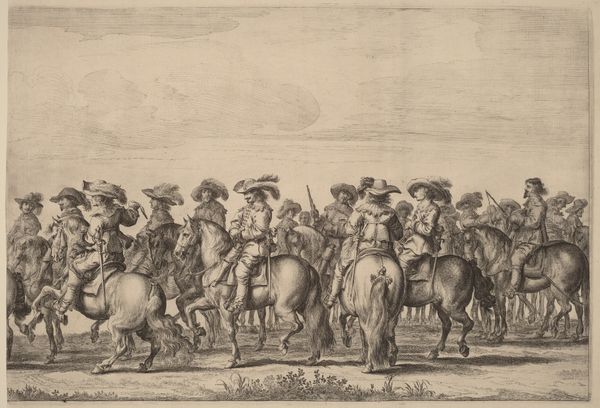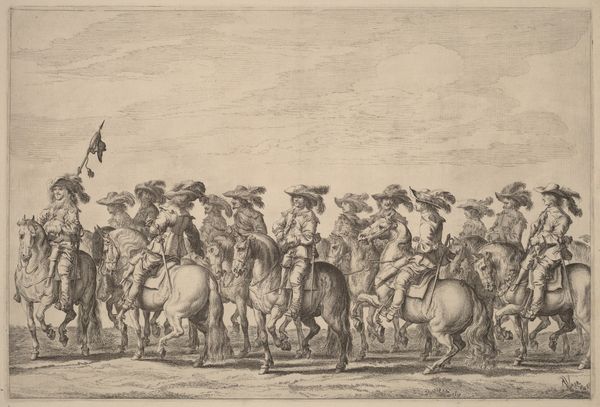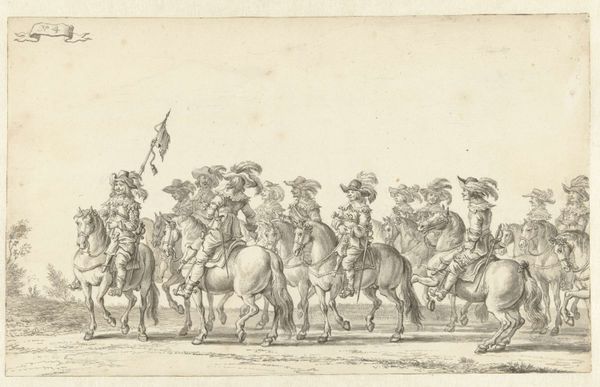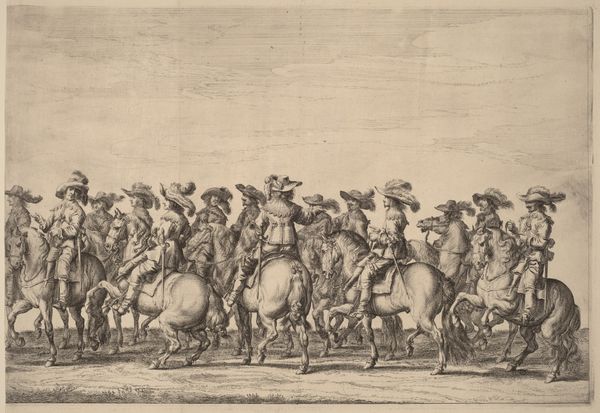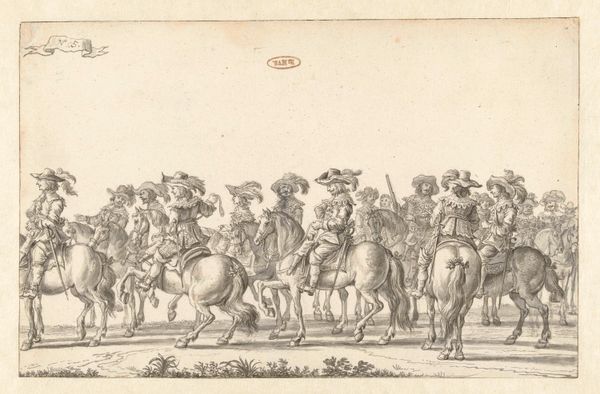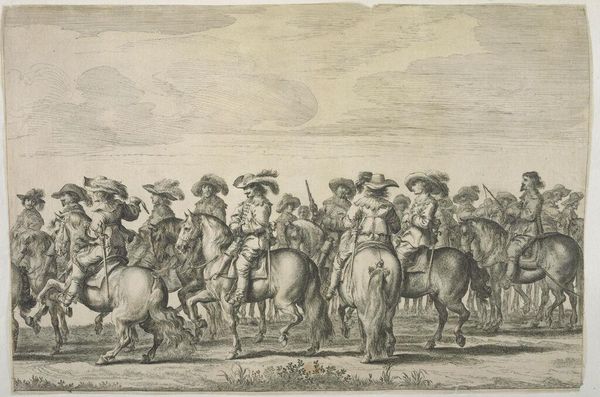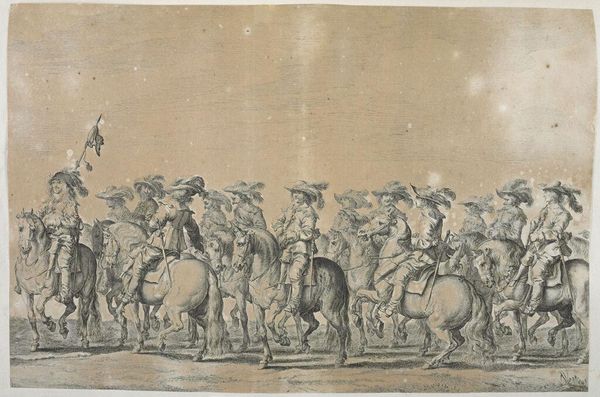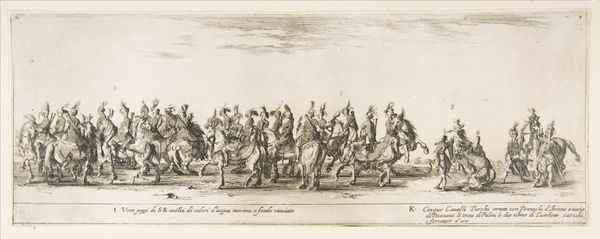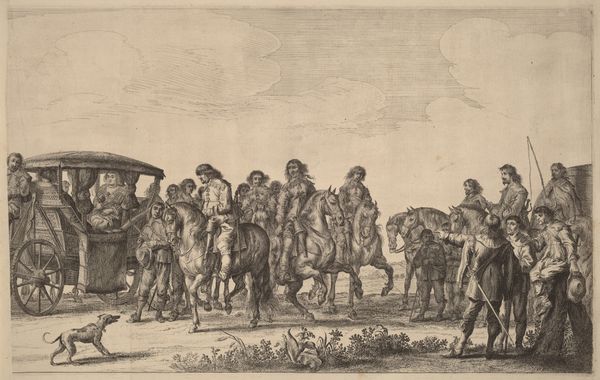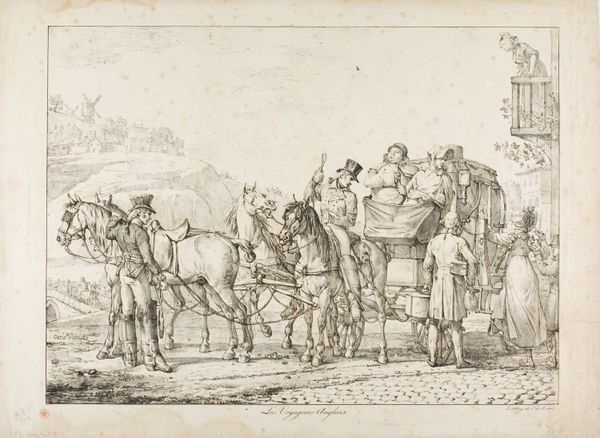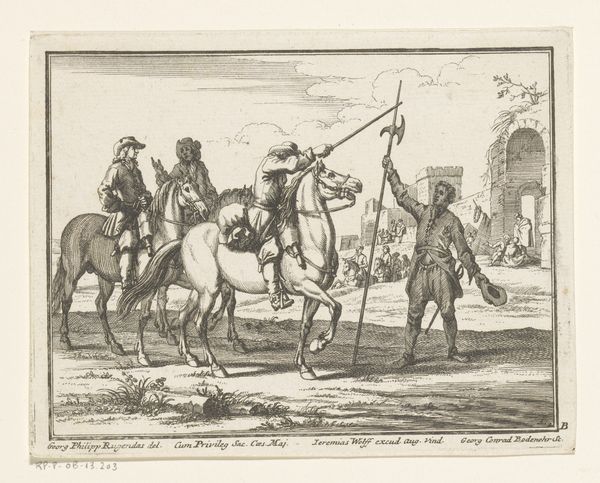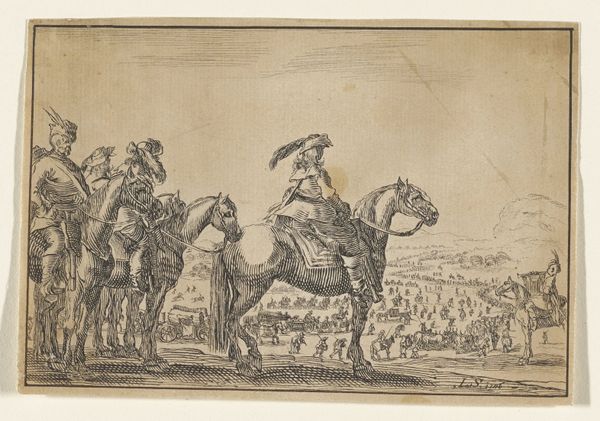![Entry of Marie de Medici into Amsterdam [plate 2 of 6] by Pieter Nolpe](/_next/image?url=https%3A%2F%2Fd2w8kbdekdi1gv.cloudfront.net%2FeyJidWNrZXQiOiAiYXJ0ZXJhLWltYWdlcy1idWNrZXQiLCAia2V5IjogImFydHdvcmtzLzRjOTE0NThlLTJmYzMtNDllMi1hZTNkLTU2MTc5YTc3YTc0Ny80YzkxNDU4ZS0yZmMzLTQ5ZTItYWUzZC01NjE3OWE3N2E3NDdfZnVsbC5qcGciLCAiZWRpdHMiOiB7InJlc2l6ZSI6IHsid2lkdGgiOiAxOTIwLCAiaGVpZ2h0IjogMTkyMCwgImZpdCI6ICJpbnNpZGUifX19&w=3840&q=75)
print, engraving
#
portrait
#
baroque
# print
#
line
#
cityscape
#
genre-painting
#
history-painting
#
engraving
Copyright: National Gallery of Art: CC0 1.0
Curator: This is a 1639 engraving by Pieter Nolpe entitled "Entry of Marie de Medici into Amsterdam." Part of a larger series, this particular print captures the grand procession into the city. Editor: It feels very...stiff, doesn't it? Formal, obviously, but almost performative in its rigid composition. Look at the way each figure is so deliberately posed, especially the horses. Curator: Well, it's a historical representation, intended to document and celebrate a significant political event. Marie de Medici's visit to Amsterdam was a carefully orchestrated affair, and Nolpe's work reflects that controlled image. It’s one plate of six from a series by different artists depicting the glorification of Marie de Medici. The original series was a volume with descriptive text by Willem Jansz. Editor: But who was this image really serving? It strikes me that these depictions of opulent entrances often mask more complicated realities. Was this display intended to distract from any social unrest, to consolidate power visually through the controlled representation of the parade? Curator: It's important to remember the cultural context. Baroque art frequently employed grandeur and elaborate detail to convey power and authority. Think of the symbolic meaning behind the specific details within a Baroque framework. Editor: I do, but can’t we examine whose authority? Wouldn't a critical lens focused on identity politics prompt questions about Marie de Medici's own position as a woman in power, even as she's seemingly being celebrated here? What are the gendered dynamics in this so-called glorification, when so many works of that time rendered women silent? The power and pageantry here overshadow opportunities for a deeper reflection on society and cultural norms of the time. Curator: Certainly, and while those reflections might not be visually explicit, an understanding of gender dynamics, of the art's broader social role, deepens the meaning we attribute to the art object. That's why social art history insists on a close relationship between work and historical interpretation. Editor: Precisely. This image isn't just a depiction; it's an artifact that offers glimpses of social values and inequalities of that era. A visual window into a performance crafted to maintain order in an evolving world.
Comments
No comments
Be the first to comment and join the conversation on the ultimate creative platform.
